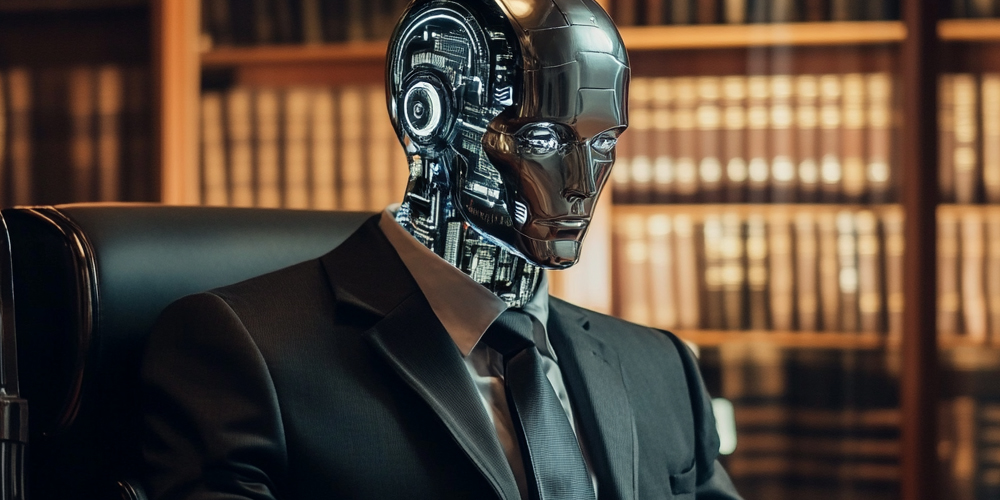The rise of artificial intelligence (AI) and machine learning (ML) has fundamentally transformed many aspects of technology, particularly in the realm of cybersecurity. As cyber threats become more sophisticated, the need for advanced tools to detect, analyze, and mitigate these risks has never been greater. In 2024, AI and ML are playing an increasingly critical role in shaping the future of cybersecurity, offering businesses and individuals enhanced protection against evolving threats.
Understanding the Role of AI and Machine Learning in Cybersecurity
Before delving into the specifics of how AI and ML are transforming cybersecurity, it’s important to understand what these technologies are and how they work. AI refers to the simulation of human intelligence in machines, enabling them to perform tasks like problem-solving, decision-making, and learning. Machine learning, a subset of AI, focuses on training machines to learn from data, identifying patterns, and making predictions without explicit programming for each scenario.
The Rise of AI in Cybersecurity
In recent years, the volume of cyber attacks has grown exponentially, making it difficult for traditional cybersecurity tools to keep up. AI-powered cybersecurity systems have emerged as a game-changer, allowing organizations to detect and respond to threats in real time. By analyzing vast amounts of data at an unprecedented speed, AI can identify unusual patterns, flagging potential attacks before they cause significant harm.
Machine Learning in Cybersecurity: A New Frontier
Machine learning plays a key role in enhancing AI’s capabilities in cybersecurity. Traditional systems relied on pre-programmed rules to detect threats, but ML models can continuously improve their ability to identify new and emerging threats. By training on historical attack data, these models can predict the likelihood of future attacks, helping organizations stay one step ahead of cybercriminals.
How AI and Machine Learning Are Improving Cybersecurity
AI and ML are driving improvements in cybersecurity across various fronts. From automating threat detection to enhancing the accuracy of security systems, these technologies are revolutionizing the way we approach digital security.
1. Automated Threat Detection
One of the most significant impacts of AI in cybersecurity is the automation of threat detection. AI systems can analyze network traffic, user behavior, and system logs to identify suspicious activities in real time. These systems work around the clock, providing continuous monitoring and reducing the need for human intervention in identifying potential threats.
2. Predictive Analytics and Proactive Defense
Machine learning enables predictive analytics, allowing cybersecurity systems to predict attacks before they occur. By analyzing historical data, ML models can identify patterns associated with specific types of cyber threats, such as phishing or ransomware attacks. This proactive approach helps businesses implement defenses before vulnerabilities are exploited.
3. Advanced Malware Detection
Malware continues to be one of the most prevalent cyber threats, with new variants constantly emerging. Traditional antivirus software struggles to keep up with these changes. AI-driven malware detection tools are designed to identify malware based on behavior rather than signatures. This allows AI to detect zero-day threats—new and previously unknown malware strains—before they cause harm.
4. Improved Incident Response
When a cyber attack occurs, quick and efficient response is critical to minimizing damage. AI enhances incident response by automating many of the time-consuming processes involved in detecting and mitigating threats. For instance, AI can automatically isolate compromised systems, alert security teams, and suggest remediation steps, allowing organizations to respond faster.
The Role of AI in Identity and Access Management (IAM)
Another critical area where AI is making a substantial impact is in identity and access management (IAM). Protecting sensitive data from unauthorized access is a key aspect of cybersecurity, and AI is helping organizations ensure that only the right people have access to the right information.
1. Enhancing User Authentication
AI-driven systems are improving the accuracy and security of user authentication processes. These systems can analyze multiple factors—such as login behavior, device characteristics, and geographical location—to determine if a user’s login attempt is legitimate. If any unusual activity is detected, the AI system can flag the attempt for further review or require additional authentication steps, such as multi-factor authentication (MFA).
2. Adaptive Access Control
AI enables adaptive access control, where the system adjusts access permissions based on the current risk level. For example, if an employee logs in from an unfamiliar location or at an unusual time, AI can limit their access to sensitive information until further verification is completed. This dynamic approach to access control helps prevent unauthorized access while maintaining operational efficiency.
Challenges and Risks of Using AI in Cybersecurity
While the benefits of AI in cybersecurity are significant, there are also risks and challenges that organizations must consider. Implementing AI-powered security solutions requires a thoughtful approach to ensure that these systems do not introduce new vulnerabilities or exacerbate existing risks.
1. The Risk of False Positives
One challenge in AI-driven cybersecurity systems is the risk of false positives. While AI can identify unusual patterns, it may sometimes flag legitimate activities as potential threats. False positives can overwhelm security teams, leading to unnecessary investigations and wasted resources. Continuous fine-tuning of AI models is essential to reduce the frequency of false positives while maintaining strong security measures.
2. AI Systems as Targets for Cybercriminals
As AI becomes more integrated into cybersecurity, cybercriminals are finding new ways to exploit these systems. Adversarial attacks are a type of cyber attack designed to trick AI models into making incorrect decisions. For example, attackers may introduce malicious data into the AI system to manipulate its behavior. Protecting AI systems from such attacks requires ongoing monitoring and the implementation of robust security protocols.
3. The Need for Ethical AI in Cybersecurity
As AI takes on more responsibility in cybersecurity, ethical considerations come to the forefront. Ensuring that AI models are transparent, fair, and free from bias is critical to building trust in these systems. This is particularly important in areas like fraud detection and user authentication, where AI decisions can have significant consequences for individuals and businesses.
4. Data Privacy and Security
AI systems rely on vast amounts of data to function effectively. However, collecting, storing, and analyzing this data poses potential privacy and security risks. Organizations must ensure that their AI systems comply with data protection regulations, such as GDPR, and that they take appropriate measures to secure the data from unauthorized access.
The Future of AI and Machine Learning in Cybersecurity
Looking ahead to the future, AI and ML will continue to play a pivotal role in the evolution of cybersecurity. As cyber threats become more advanced, AI systems will need to evolve to keep pace with these changes. Here are a few ways AI and ML are expected to shape the future of cybersecurity in the coming years.
1. Autonomous Cyber Defense
One of the most exciting developments in AI is the rise of autonomous cyber defense systems. These systems have the ability to detect, respond to, and mitigate cyber threats without human intervention. By leveraging advanced machine learning algorithms, autonomous defense systems can learn from past attacks and improve their response capabilities over time.
2. AI-Powered Threat Intelligence
Threat intelligence is becoming increasingly important in the fight against cybercrime. AI can enhance threat intelligence by analyzing data from various sources—such as social media, the dark web, and threat databases—to identify emerging threats. This allows organizations to implement preventive measures before an attack occurs, significantly reducing the risk of successful cyber attacks.
3. Collaboration Between AI and Human Security Experts
While AI has the potential to automate many aspects of cybersecurity, it will never fully replace human expertise. In the future, we can expect greater collaboration between AI systems and human security professionals. AI can handle routine tasks, such as monitoring and data analysis, while human experts focus on more complex decision-making and strategy development.
4. The Role of AI in Securing IoT Devices
The rise of the Internet of Things (IoT) has introduced new vulnerabilities into the cybersecurity landscape. IoT devices are often targeted by cybercriminals due to their limited security features. AI can play a key role in securing IoT networks by detecting anomalies in device behavior and automatically isolating compromised devices from the network, preventing the spread of attacks.
Conclusion
The impact of AI and machine learning on cybersecurity is undeniable. As cyber threats continue to evolve, AI will be instrumental in helping organizations detect and respond to these challenges more effectively. However, as with any technology, the integration of AI into cybersecurity comes with its own set of risks and challenges. By understanding both the benefits and limitations of AI, businesses can harness its potential to create a more secure digital environment in 2024 and beyond.







